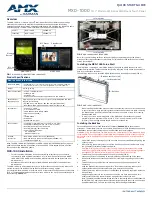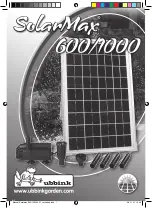
P A G E 1 5 O F 1 7
M I S S I ON S OL A R E NE R G Y L L C
ELECTRONIC
versions are uncontrolled except when accessed directly from document control directory. Printed copies are uncontrolled unless verified against online document.
C OP YR I GH T 2 0 2 0 M I S S IO N S OL A R E N ER GY L L C , AL L R I G H T S R ES E R V ED
REVISION: R2
RELEASE DATE: 9/25/2020
11.0
ELECTRICAL INSTALLATION
11.1
LOCAL / NATIONAL CODE AND LOCAL
REGULATION
To carry out installation, local regulations that may apply
should be taken into account such as NEC (USA) or
Canadian Electrical Code (Canada). Wiring should be
performed by a qualified and licensed professional.
Wiring should be protected to help ensure personal
safety and to prevent damage. All modules connected in
series should be of same model number and/or same
type. Do not connect modules in parallel without using a
combiner box or equivalent.
Under normal conditions, a photovoltaic module is likely
to experience conditions that produce current and/or
voltage other than reported at Standard Test Conditions.
The requirements of the National Electric Code (NEC) in
Article 690 shall be followed to address these increased
outputs. In installations not under the requirements of
the NEC, the values of I
SC
and V
OC
marked on this module
should be multiplied by a factor of 1.25 when
determining component voltage ratings, conductor
capacities, over current device ratings and the size of
controls connected to the PV output.
11.2
WIRING
Mission Solar PV modules come with a factory assembled
junction box. Do not open the junction box in any case.
Wiring must be done in accordance with local/national
code and regulations; wear protective gloves and shoes
to avoid electric shock. Address the following
recommendations:
•
The modules combined in parallel will produce a
specific current output. Each series string or
module is required to be fused. Table 1 describes
the maximum fuse size allowed.
•
Do not connect the modules if the connectors are
wet.
•
Be sure to put the cables away from sharp edges.
•
If you need additional cables you must use
exclusively solar cable of 12AWG/4mm
2
minimum cross-sections, with ability to work in a
temperature range of at least -40
o
C and 90
o
C.
•
Install the modules so that water from rain or
condensation cannot penetrate inside the cable
conduits.
•
Fix cables to the structure so that the connectors are
protected from water ingress. Cables should be held
by UV resistant clamps or ties.
•
To minimize possible effects of lightning induced
voltages, the surface of all conductive loops must be
as small as possible.
•
Check that the wiring is correct before starting the
installation by verifying that the open voltage is
within expected values.
•
Protect cables that could suffer mechanical damage.
•
Avoid direct sunlight on cables.
•
Maximum series fuse rating 20A.
•
Details for wiring in accordance with the NEC, and
that the grounding method of the frame of arrays
shall comply with the NEC, Article 250.
•
Installation shall be in accordance with CSA C22.1,
Safety Standard for Electrical Installations, Canadian
Electrical Code and Part 1.
•
Modules may be connected in series (voltage
additive) and/or in parallel (current additive) to
produce the appropriate electrical output. When
connecting modules in parallel, each module (or
series string of modules so connected) shall be
connected according to the maximum series fuse as
specified.
•
Recommended series connection of module open
circuit voltage should not exceed 80% limits range of
the system voltage and the fuse should be connected
at the end of each array.
•
The installation instructions specify that grounding is
achieved through securement to the array frame. The
array frame must be grounded in accordance with
NEC Article 250.
•
Mission Solar modules are equipped with factory-
installed wires and connectors. These modules have
been designed to be easily connected in series. Each
module has two single-conductor wires, one positive
and one negative that are pre-wired inside the
junction box.
•
The connectors at the opposite end of these wires
allow easy series connection of adjacent modules by
firmly inserting the male connector of a module into
the female connector of an adjacent module until the
connector is fully seated.
•
A separate return wire or wires are required to run
the positive and negative terminations of the
series string of modules to load. Male and female
connectors pre-attached to wires could be used at



































